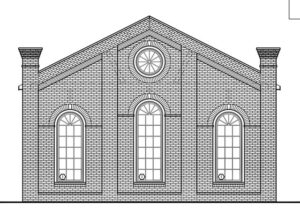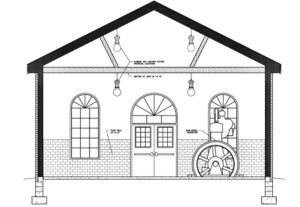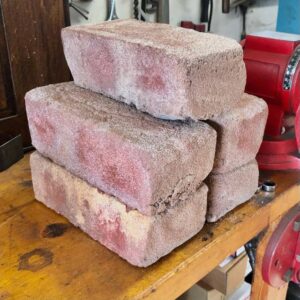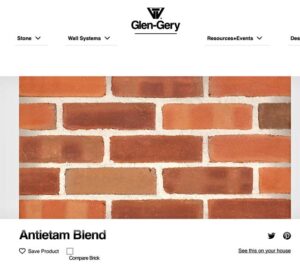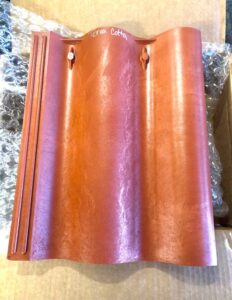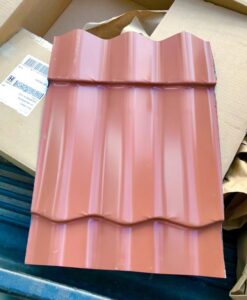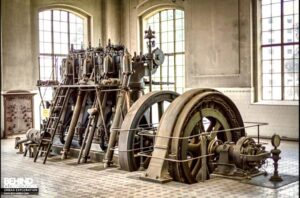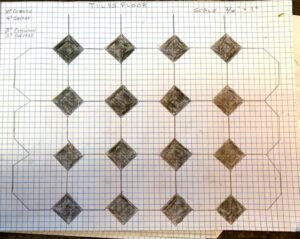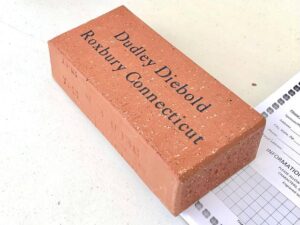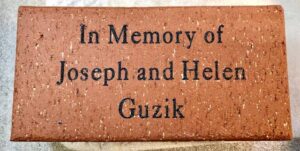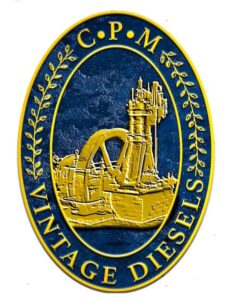
October 2021
After a couple of hurdles our project has since progressed well, as documented in the first part of the trilogy: It’s Happening. Satisfying? Definitely yes! But reflecting back, it was easy. Look at the great detailed drawings made by our contractor, watch the crew dig and pour concrete, dig some more and install engine foundations; and it happened very well.
But now there are choices to be made. Yep, details! So how to begin? What is needed first?
Seems like a special logo would be best. So, we again contacted Mary Beth, owner of Creative Marketing Strategies, to do her magic. She had already created all the artwork for the mugs, tee shirts and caps that we are selling for proceeds to help our ABI project. Hence, this fantastic logo was created. A great tool for all correspondence.
Now we contacted Punxsy Computer to design a special website dedicated to documenting the project with photos, articles, e-commerce items, as well as a live camera to watch all the progress as it happens. Soon cpmvintagediesels.org will be on the air! We want to spread the word.
Getting back to reality, we now had many details to address. Didn’t really seem like much, but wow! it is. The story unfolds with this myriad of ideas.
We are creating a building to resemble a 1900s German powerhouse to be the home for our three classic German Diesels: the Augsburg, the Graz, and the Benz. Simple, huh? It will have a brick exterior, tile floor and wainscoting, and tile roof. So, what do these items look like and who supplies them? That’s when the fun begins! Looking, choosing, contacting, then doing it all over again. So, the story gets interesting.
Here are two early artist’s renditions of how we wish our powerhouse to appear. So, a working model has been established along with a goal to be reached. Some details will change as the idea develops. Progress!
By now, one might wonder why we are fascinated with the German design? Dr. Diesel was German and developed his first engines using the air-blast injection design. The early powerhouses for these engines were beautifully designed. That is our goal.
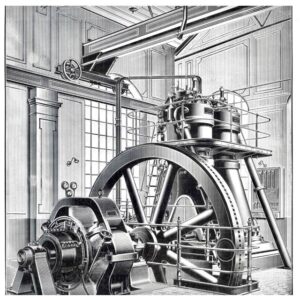
So, let’s have a sneak peek at all the options we are considering and what they look like. None are cast in stone quite yet.
Have to start logically, so we will choose the walls first, and now take a trip to the brickyard to see what’s available. We chose Glen-Gery Corporation, which has a plant in nearby Summerville. The choices seem endless.
First being impressed by the hand-made series, a sample proved that they were not right for us. We are now considering the ones shown on the right. The example shown is their molded series.
Excellent. So logically the roof is next. What holds it up? Yep, trusses! Reflecting back, all the original installations used steel trusses made from angle iron bolted together. We will do the same. Our general contractor consulted a professional engineer and Scott Dinger from nearby Stanton Dynamics will build them to the engineer’s specifications. Great!
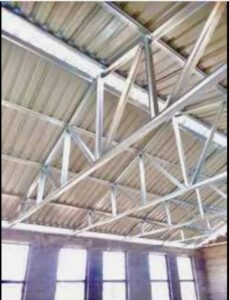
So, what goes on top of the trusses? There will be two-inch thick tongue and groove planks, finished and stained on their inside surfaces, and red tile on the outside. Now the outside material. Hmm… Real tile is very heavy and expensive, so we need an alternative. Let’s take a look for what is available.
The photo to the left is a sample of a composite tile from Brava Tile and the one to the right is a metal imitation from Best Buy Metals. Both have advantages, and we now awaiting complete estimates to decide between them. Hint: I now favor the Brava for its realism!
Now, let’s move inside and look at the floor. It will be insulated and carry heat pipes in the concrete. What about the surface? All the classic powerhouses had black and white tile floors arranged in various patterns, so we will do the same.
Note the floor design of this Graz engine in Diesel Centrale in Austria. The classic old powerhouses used many design variations of the black and white theme, but I really prefer the pattern shown in my sketch. Plus, these tiles are even readily available at many locations.
The project has had an excellent response to the memorial pavers being sold. This is a 4 x 8-inch size, and an 8 x 8-inch size is also available. We certainly thank all who have helped! They will have a special place of honor.
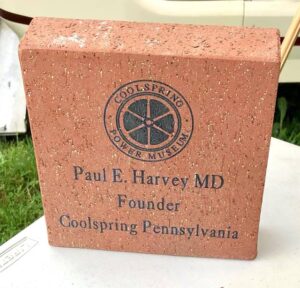
The walls will be wainscoted with a glazed tile to five feet and the area above will be a white stucco finish, which will have wall lighting, fuel tanks, gauges, and similar use. This design can be seen in one of the earlier photos. Yep, all classic design.
Paying attention to detail, the main lighting will be reproduction carbon arc fixtures which we are having made. They will use LED bulbs and will look like the originals. We will also have hidden, indirect lighting for proper illumination.
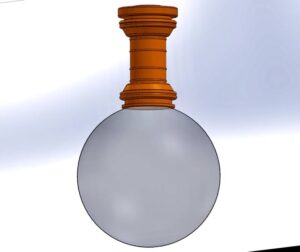
And so ends my little story of the dilemma of the details. Frustrating at times, it has been a real learning experience! I’m so glad to be involved. But I know what you are wondering about the exterior progress.
Maybe this three-inch gate valve that I restored as the main water shut-off gives a hint to the great progress with the piping outside. Guess you will just have to visit the museum to see!
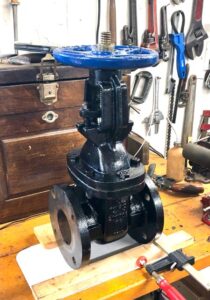
Curious now? Great! You will just have to wait for the third part of the trilogy: The Fall Finale. The tale continues.
Keep reading.

